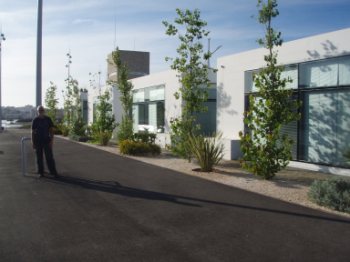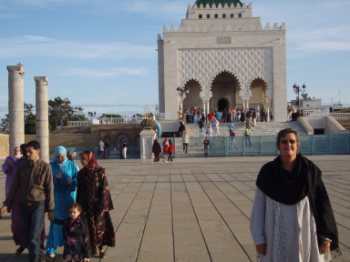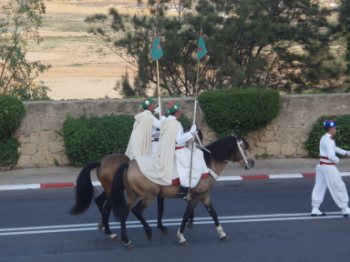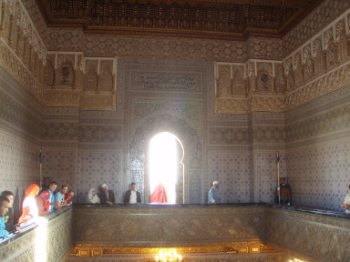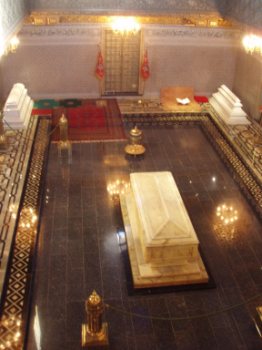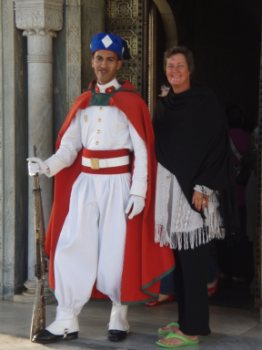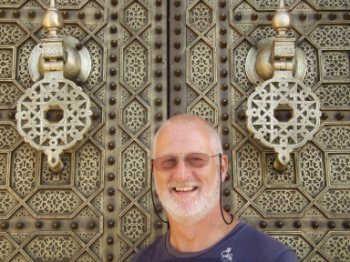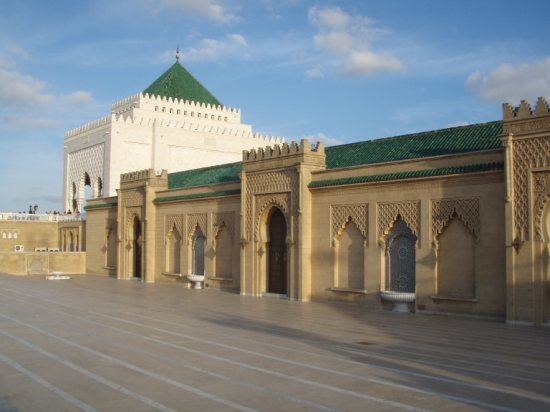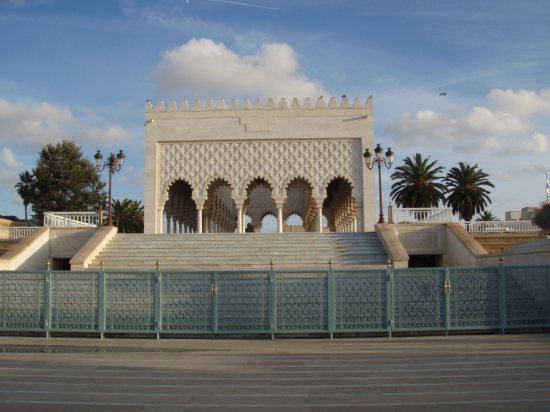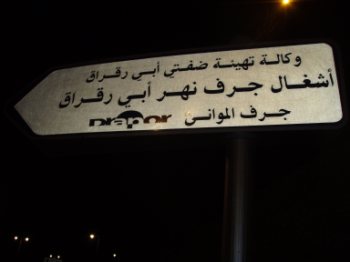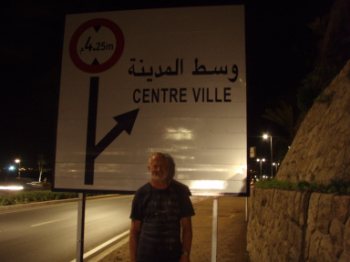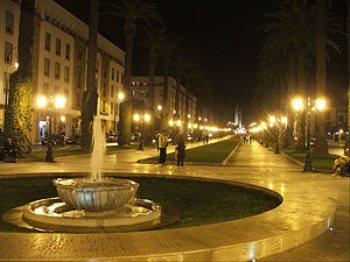Rabat - A Day Out

|
Rabat
Rabat ( Arabic الرباط ) population about 2 million, is the capital of the Kingdom of Morocco. It is also the capital of the Rabat-Sale-Zemmour-Zaer region. The city is located on the Atlantic Ocean at the mouth of the river Bou-Regreg. On the facing shore of the river lies Sale ( pronounce Sally ), Rabat's sister community. Unfortunately, silting problems have diminished the city's role as a port; however, two years ago the marina development was started, as yet to new to be in the pilot books.
Skipper by the marina admin buildings. The 1st houses the Maritime Police, the 2nd the Civilian Police and the 3rd marina staff. Me en route to The Hassan Tower with the last of the fairway to the actual entrance of the marina. Beez Neez to the right of the lamp-post in this sparcely populated marina at about £3.00 per day (off season prices) including water, electricity and excellent wi-fi connection. Rabat and Sale still maintain relatively important textile, food processing and construction industries; some are from sweatshop labour by major multinational corporations. The average wage here is about 100 Dirham's per day at 14 to the English Pound. In addition, tourism and the presence of all foreign embassy's in Morocco serve to make Rabat the second most important city in the country after the larger and more economically significant Casablanca ( given worldwide fame by the movie of the same name ). Rabat's history began with a settlement, known as Chellah in the third century BC. In 40 AD, Romans took over Chellah and converted it to the Roman settlement of Sala Colonia. Rome held the colony until 250 AD when they abandoned it to Berber rulers. The Berbers played an important role in Muslim Spain. In 1146, the Almohad ruler Abd al-Mu'min turned Rabat's ribat into a full scale fortress to use as a launching point for attacks on Spain. In 1170, due to its military importance, Rabat acquired the title Ribatu l-Fath, meaning "stronghold of victory," from which it derives its current name. The French invaded Morocco in 1912 and established a protectorate, they decided to relocate the country's capital from Fez to Rabat. Among other factors, rebellious Berbers (native Moroccans) had made Fez an unstable place. Sultan Moulay Youssef followed the decision of the French and moved his residence to Rabat. In 1913, Gen. Lyautey hired Henri Prost who designed the Ville Nouvelle ( Rabat's modern quarter ) as an administrative sector. When Morocco achieved independence in 1956, Mohammed V, the then King of Morocco, chose to have the capital remain at Rabat.
Rabat's most famous monument is the Tour Hassan, a 44-meter tall minaret tower that is all that remains of an enormous mosque built around 1200 that was mostly destroyed in an earthquake in 1755. Now all that remains besides the tower is the paved area ( behind Bear ) coinciding with the mosque's foundation and some re-erected pillars. Also on the site is the richly decorated Mausoleum of Mohammed V behind me.
Across the road from the main entrance at 17:00 the bugler sounded the flag-lowering ceremony with military guard, traffic was halted and waited for the procession to return to quarters accompanied by the horseguards, who stand all day in sand boxes. Hey it may not be the changing of the guard at Buckingham Palace but it held a unique dignity all of its own and we were delighted to watch it.
You could enter the stunningly decorated Mausoleum and look down onto the tombs of Mohammed V - His two sons, King Hassan II (the father of the current king, Mohammed VI) and Moulay Abdellah, are also interred here. The breath-taking golden ceiling. Construction of the mausoleum was started after the death of King Mohammed V in 1961. He is revered as the person most responsible for the establishment of Morocco as an independent kingdom. Mohammed V was laid to rest here upon the building's completion in 1967. Vo Toan, a Vietnamese architect, was credited with the design of the Mausoleum. An incredible amount of intricate work completed in a relatively short period of time.
I really admired this guard's weapon, it was very ornate indeed. Bear admired the sheer size of these golden knockers needing a close up as well as a full view.
A couple of very simple shots - but - with their own unique beauty.
We left the grounds of the mausoleum by the side gate to go explore the Medina. The new tramway is being laid and the "boy in the man" had to check for straightness. I went to look in an amazing Murano glass chandelier shop. Meanwhile a delighted skipper found a kink or two.
Shall we hire a car to go off to the other towns we want to visit "Are you nuts, they drive three abreast in two lanes, the motorcyclist rarely put lights or helmet on, and CAN YOU read the signs". Talking of signs, we are the wrong height, if you amble along not looking where you are going you can inflict serious head injury to yourself. Our final view of downtown Rabat before going back to Beez, exhausted, me asking for the sponsorship accorded to my tired and swollen feet, ( I've mentioned before - more than about two miles and I only do it for charity, we did about six ). ORRRRUGH. All in all a good day out. |
